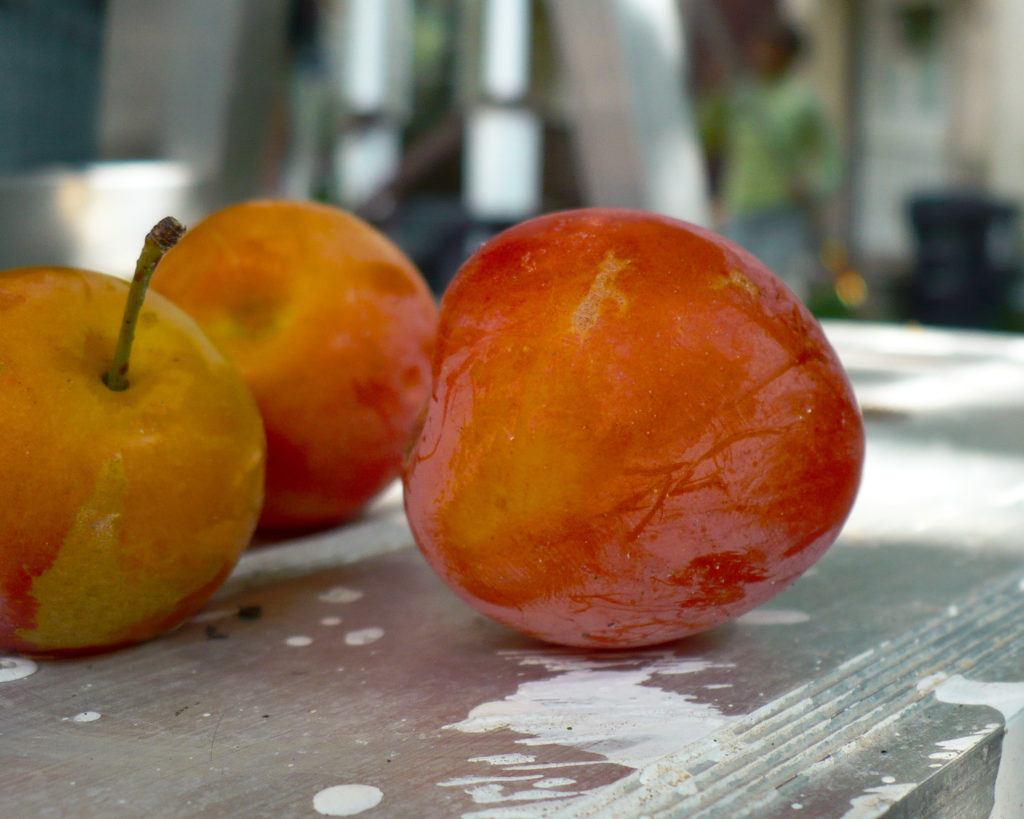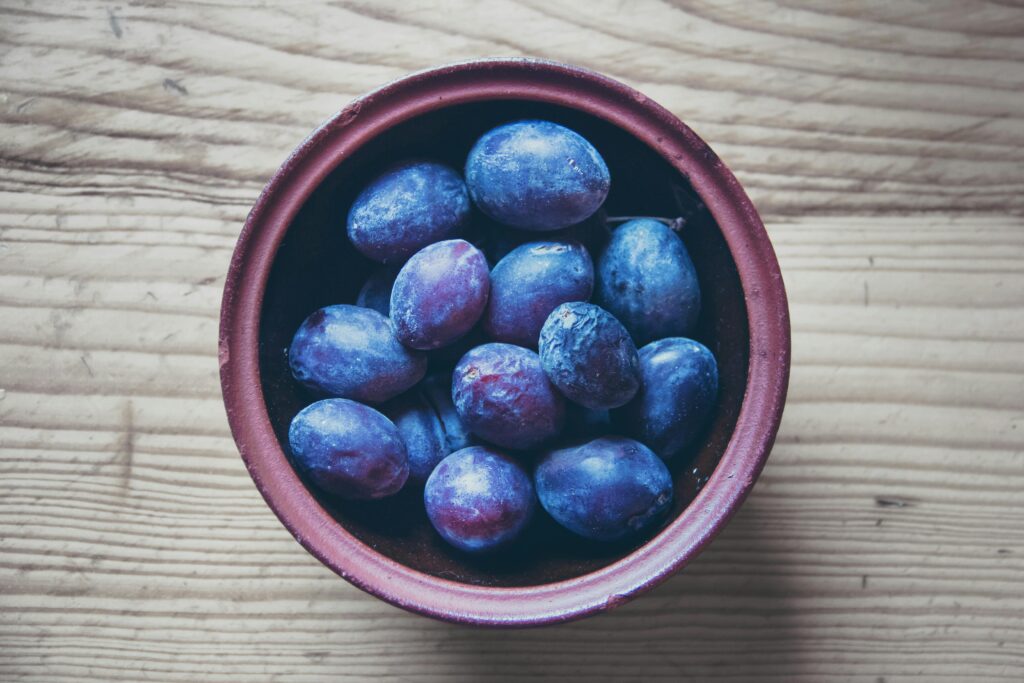Plums
Cree: sóminátik
Ojibwe: bagesaan
Summary
Plums of many varieties, colours and flavours can be found in Toronto’s urban orchard. Plum trees are not very abundant so these local edibles are quite a rare treat. Plum tree produce round or oval-shaped fruit, around the size of a golf ball with a central pit. Depending on the variety, plums can be purple, blue, green, yellow and/or red when fully ripe.
Jump To
Average Ripening Timeline: mid July to early September


Ripeness Indicators
- Color When Ripe: purple, blue, green, yellow and/or red when fully ripe. May have bloom (white, powdery substance) on the skin (which is a harmless fungus that feeds on the fruit’s sugars)
- Feel & Texture When Ripe: soft
- Taste & Smell When Ripe: sweet or tart
- Underripe if…hard to the touch, not sweet to taste
- Overripe if…mushy, wrinkled, or discoloured

How to Harvest
Average Yield: 15 to 100 lbs
- Hand-picking is best; twist gently and try to leave stem on plum
- Ripe plums drop from the tree very easily so be ready for lots of windfall, and consider using the mulberry tree vibrating technique for those hard to reach plums
- Picking poles can be used with tarps to catch dropped fruit
- Can be picked slightly underripe
- Should pull/detach easily from tree
- Quite fragile, so it is best to place them in shallow containers and not pile them too high

How to Store and Eat
Storing
Plums will continue to ripen off the tree, on your counter
- Fridge: Place ripe fruit in the fridge right away. Be careful to check on ripening plums — they can go quickly from unripe to overripe
- Freezer: wash, dry, and halve plums to remove the pits. Freeze in a single layer on a baking sheet, then transfer to a bag or container. Use within 6 months
Ideas for Eating
Eating fresh; baking; jam; chutney; sauces; smoothies; dehydrating